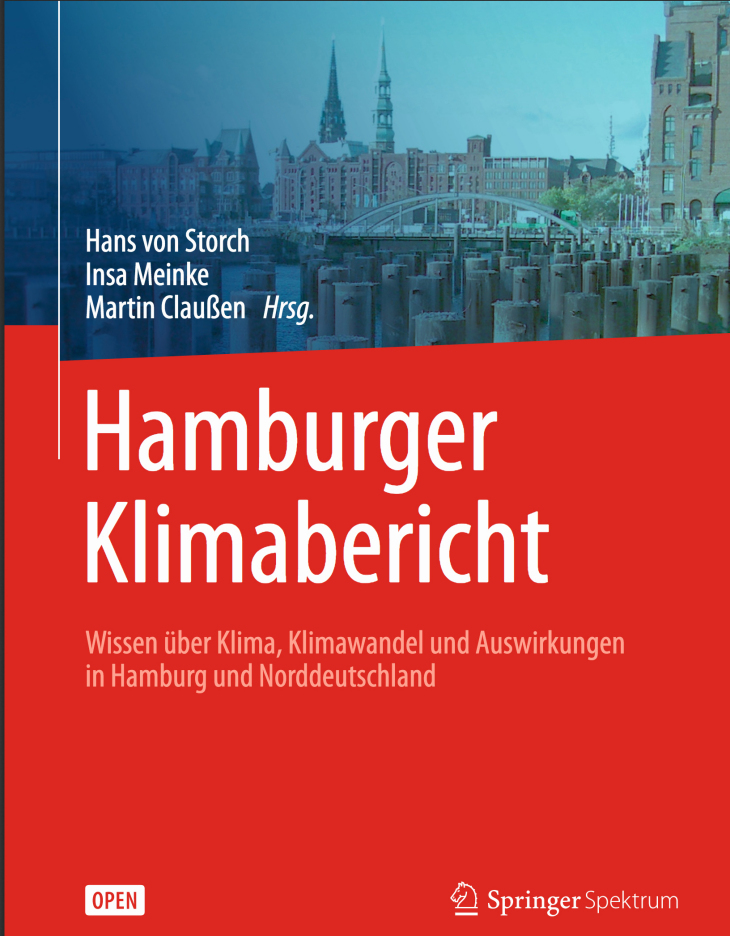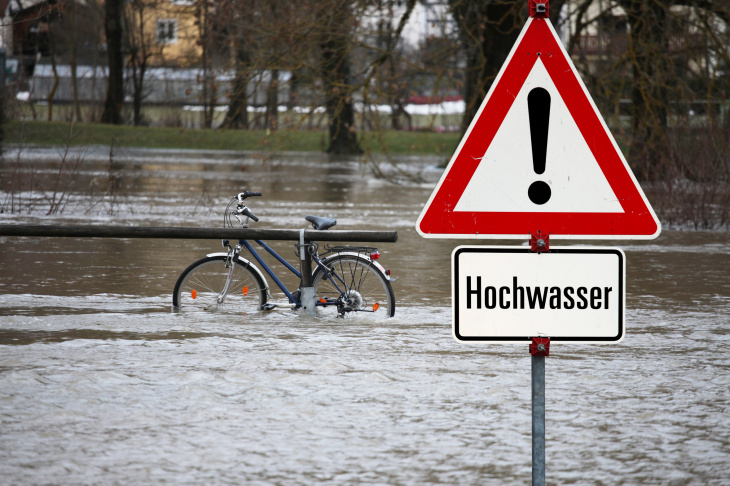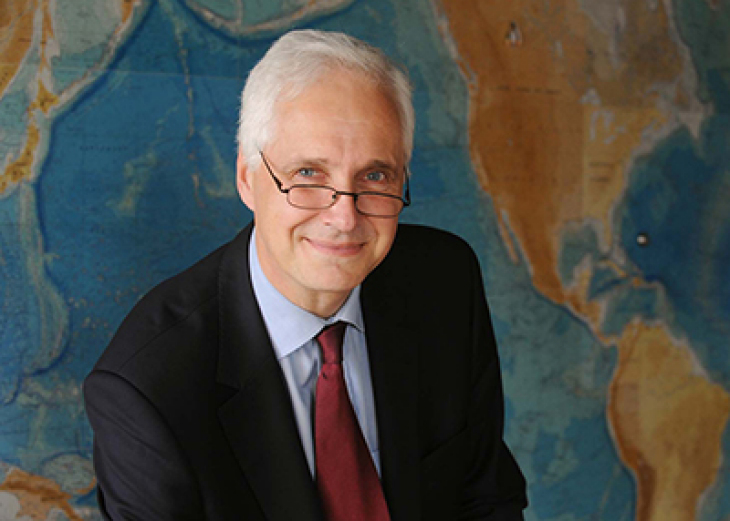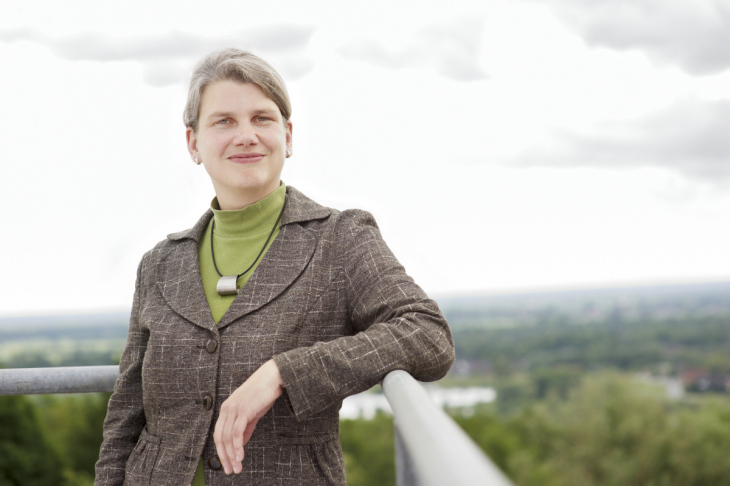Second Hamburg Climate Report:
What do we know about climate, climate change and its effects in Hamburg and Northern Germany?
[b]Climate change is not only a global challenge. The Hamburg Metropolitan Region also must act in regard to political policy, management and society. How can inevitable transformations due to climate change be tackled? How should urban emission reductions be organized? The KlimaCampus Hamburg’s 2nd Hamburg Climate Report summarises the current state of science.[/b[

Climate change has thus far led to a global average temperature increase of about one degree Celsius. Even if the ambitious target set out in the Paris Climate Agreement is achieved, which means limiting warming by the year 2100 to 1.5 degrees above the pre-industrial level, the effect of this warming continues. These effects play out in a number of ways within various economic and natural environments. The necessary adaptation measures must therefore be developed mainly at a regional level. At the same time, emissions in Hamburg should be reduced. This preferably occurs with both efficiency and societal acceptance. The Hamburg Climate Report published by the KlimaCampus Hamburg summarizes the current state of research as a foundation and sheds light on the necessary responses to climate change in Northern Germany. More than seventy authors systematically gathered the research results. All contributions were subjected to a scientific review process, which was monitored by a steering committee.
Key Points:
- Thetemperatures in the Hamburg Metropolitan Region have risen by approximately 1.4 degrees Celsius since 1881, 1.2 degrees of which is accounted for during the period after 1951. Depending on the success of global climate protection policy, the temperature in Hamburg and Northern Germany will have risen by another one to five degrees Celsius by the end of the century (2071-2100) compared to today (1961-1990).
- The amount of precipitation has increased in Hamburg and Northern Germany, particularly in winter, while dry spells in spring now last longer than they did a few decades ago. A considerable increase in precipitation is expected in the future, mainly during the winter months. Heavy precipitation and rainy days could also increase.
- There is still no evidence for systematically stronger storms all year round. There has been a slight increase in storm frequency and intensity since the 1960s. This, however, lies within the range of natural fluctuations in a long-term context (one hundred years).
- The urban area of Hamburg is on average approximately 0.1 degrees Celsius warmer than the surrounding region, with local peak values of 1.2 degrees in the city centre. This urban effect is barely altered by climate change. Temperature thresholds, however, are more quickly exceeded so that hot days in the city occur more frequently than in the surrounding regions. Furthermore, heavy precipitation could increase. In the future, this should be taken into consideration in terms of urban planning.
- Along the German coasts , the water surface temperature has increased in the last few decades and the sea level has risen by about fifteen to twenty centimetres in the last century. In the future, the water will continue to warm along the German coasts, and the sea level could increase another twenty to eighty centimetres by the year 2100. As a result, light storm flooding could occur more frequently. Climate change consequences for the Elbe have been difficult to identify to date due to hydraulic engineering measures and natural dynamics.
- In terms of terrestrial ecosystems, the beech is expected to continue as the prevailing tree species in northern German forests. Oaks and spruces could, however, become more common in a scenario with considerably decreasing summer precipitation. In addition to climate change, it is primarily the fisheries that impact the aquatic ecosystems.
- Energy supply and climate change are interdependent. Eighty-two per cent of Hamburg’s energy currently comes from fossil fuels. An expansion of renewable energies is expected as a response to climate change and in view of the Paris Climate Agreement. This would increase dependence on prevailing weather conditions (duration of sunshine, wind strength, cloud formation, sea state). These conditions could be affected by climate change, which in turn affects energy production. Power stations along rivers could be impaired by low water levels and high water temperatures.
- Drinking water in Hamburg is exclusively obtained from groundwater. Groundwater levels could decrease during longer periods of drought. Obtaining drinking water will then become more difficult. In addition, heavy precipitation can impair water quality. Drainage systems should be prepared for higher amounts of precipitation in the future.
- Hamburg’s sustainability policy, with its twenty-year history, offers approaches for combining climate change and sustainable development. These approaches can be further expanded based on scientific suggestions.

© Fotolia/Thaut Images
The 2nd Climate Report follows the first report published in 2010. Knowledge has since increased significantly, especially in the area of climate change and society. These insights include, for example, climate protection, governance and sustainability. On October 24th, 2017, the report will be formally introduced to government officials and the scientific community at the Hamburg Chamber of Commerce and will be situated in a context for the city of Hamburg. Read the report online
KlimaCampus Hamburg

The KlimaCampus Hamburg is an informal association of scientific establishments in and around Hamburg that deals with climate change and its consequences. Members include the city’s universities, research institutes within the Helmholtz Association of German Research Centres, the Max Planck Society, the Leibniz Association and federal government bodies based in Hamburg.
The Climate Report from the Authors perspective

Prof. Dr. Hans von Storch. Photo: HZG
Prof. Dr. Hans von Storch [Helmholtz Zentrum-Geestacht and the University of Hamburg]: “Climate change caused by humans presents a real and substantial societal challenge that should not be devalued in the short-term fire of political media exaggeration. Appropriate handling of this challenge requires a solid foundation of knowledge, which we provide here for the Hamburg Metropolitan Region.”

Prof. Dr. Martin Claussen. Photo: Max-Planck Institut für Meteorologie
Prof. Dr. Martin Claussen [Max-Planck Institut für Meteorologie and the University of Hamburg]: “The KlimaCampus Hamburg has set itself the aim to use the scientific competence of the KlimaCampus partners for public understanding, informing political decisions and economic planning at the regional as well as national and international levels on the subject of climate. In this regard, KlimaCampus Hamburg sees itself as an intermediary in the breadth of scientific climate knowledge without pursuing a political agenda of its own. It is in this spirit that the second progress report on the topic of climate change has been created for the Hamburg Metropolitan Region.”

Dr. Insa Meinke. Photo: HZG/Christian Schmid
Dr. Insa Meinke [Norddeutsches Küsten- und Klimabüro, Helmholtz Zentrum Geesthacht]: “The Hamburg Climate Report is an important foundation for our work in the Norddeutsches Küsten- und Klimabüro. As a long-term point of contact, we want to enable the northern German public to respond to climate change based on scientific insights.”
Contact
Helmholtz-Zentrum Geesthacht / Centre for Materials and Coastal Research
Center for Earth System Research and Sustainability (CEN)
